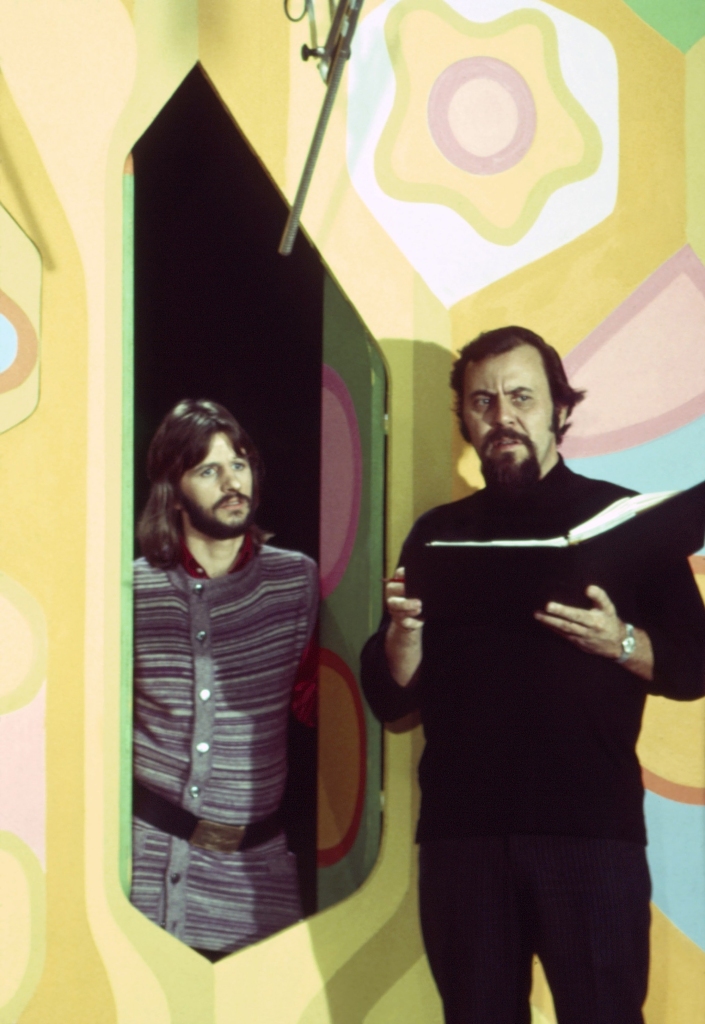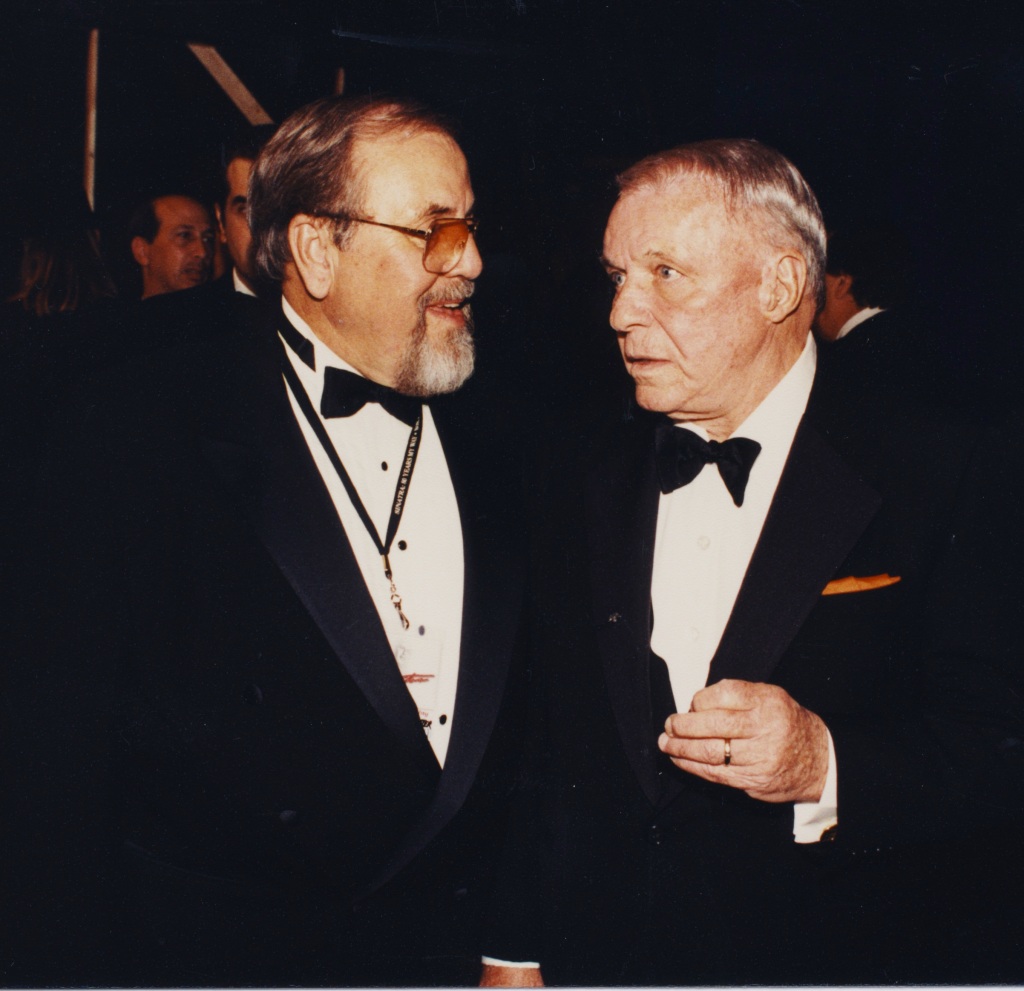Comedy legend George Schlatter on pal Judy Garland: ‘Dangerous and fun’
“Laugh-In” creator George Schlatter’s new memoir, “Still Laughing: A Life in Comedy,” recounts his legendary show business career encompassing music, nightclubs — and, most notably, television.
“I keep saying this is my first book — and next year I’m going to read another one,” Schlatter joked to The Post in a wide-ranging interview about “Still Laughing,” out July 11 (The Unnamed Press). “They were after me to tell people about my long and illustrious past … so I sat down in the office and I talked into a machine and I talked and talked and flashed back on a lot of memories — some of them more colorful than others.”
In “Still Laughing” (“as told to” writer/producer Jon Macks), Schlatter regales readers with stories from his 70-plus-year career in the limelight, including his stint managing Ciro’s nightclub in Hollywood to his years in television, producing five episodes of “The Judy Garland Show” (1963-64 on CBS) and famously creating “Laugh-In,” the hugely popular and groundbreaking quick-hit/groovy/topical sketch-comedy series that aired on NBC from 1968-73 and launched Goldie Hawn and Lily Tomlin, among others, into stardom. (Tomlin wrote the Foreword and Hawn the Afterword for “Still Laughing.”)
Schlatter, 93, who’s been married to actress Jolene Brand for 67 years, reminisced with us about his life and career.
Is there any particular period of your career that you remember more fondly?
When I think back about it, it’s a series of adventures and misadventures, takes and mistakes. I can’t remember any favorite [period] but whatever it was it was after I married Jolene. Until then I worked at Ciro’s, the Frontier [hotel] in Vegas, and some of that was colorful … but there are moments in my illustrious, suspicious past that are better left not put in a book. I did know a lot of very colorful people, and I survived those relationships. I realize that other than Dick Van Dyke, Norman Lear and Mel Brooks, that’s pretty much all that’s left [from the era]. So now I can say anything, and who can say I’m not telling the truth? Everybody I talk about is probably dead by now.
Talk a little about Judy Garland.
My relationship with Judy Garland was unique because she was a very special, very volatile person and I had a lot of adventures with her — which don’t sound like any “Over the Rainbow” descriptions of her. She was not as difficult as people said but she was an adventure. Working with Judy was dangerous and fun. I got by with her the same way I got by with Frank Sinatra — I made her laugh. And if you could make Judy laugh, you broke that coil of tension that built up around her.


I wanted to do [‘The Judy Garland Show’] so much but I didn’t want to meet her because I didn’t know how to audition for Judy Garland. I was hired before I met her. My first meeting with Judy was interesting; I didn’t know what to say; she had just arrived and there she was, this tiny, tiny little person, so I said, “I don’t know what you might have heard about me, but there’s no truth to the rumor that I’m difficult” and she looked at me and said, “You’re difficult?” And I said, “See, even you’ve heard about it!” After that we went out and consumed a lot of Blue Nun Liebfraumilch.
How did “Laugh-In” start?
Goldie, Lily … all those people came into my life kind of by accident. NBC had nothing to put on at 8 o’clock Monday night; it was a disaster time period because it was opposite “Here’s Lucy” and “Gunsmoke.” So I went in and said, “I’ll give you a show” and I had a collection of all these young character people — Artie Johnson, Judy Carne, Goldie, Lily, Jo Anne Worley — and I put them in the show. And because of my own minimal attention span, we started putting bits and pieces together using the new editing techniques that were only just discovered … we could edit those little pieces into the show — some of them were five, 10, 20 seconds — and that’s how we got by with some things. We would say something and before the network and censors figured out what we said, we were saying something else — and by then it was too late to stop it. It wasn’t obscene, it wasn’t dirty — it was just bawdy. The speed [of the show] gave it a feeling of adventure and danger.
Is it true that Frank Sinatra was so mercurial?
When you hear the stories about Sinatra, you imagine he was like 9 feet tall and had fangs. He was a small man, and the enormity of that talent and the magic of his performance made people love him. However, dealing with his talent … well, that required an emotional and intellectual balance which was occasionally a bit elusive. But God he was fun. I met him when I was very young and he looked at me and said, “I have ties older than this guy.” I could pretty much get Frank to do anything because I could make him laugh and it broke that tension. Sinatra would show up at “Laugh-In” and do six or eight one-liners. It was unheard-of for Sinatra to be doing jokes, but it worked.

You talk about Ernie Kovacs in the book.
Jolene met Ernie, who absolutely fell in love with her. Today people hear about Ernie Kovacs but I’m not too sure they’ve experienced him. I had great fun with Ernie. My whole life was punchlines; everything had to have a punchline or a rimshot and Ernie and I would argue endlessly about fact he that never had punchlines. Ernie called me one night at 10 o’clock and said, “You gotta come to the studio,” so I go over to ABC and he’s there with Jolene. There’s a car raised up on the stage; Ernie puts his hand on the fender and the car goes through the floor. He said to me, “Now, is that a punchline?”
It was just visual candy and I loved him.
Read the full article Here


